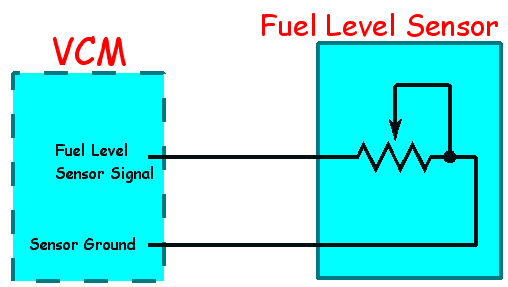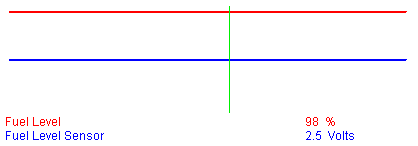2000 GMC Safari Van
Whew.... Its been a tough week. But here it is 4:30 and Friday... I'm all caught up and if I play my cards right, I can sneak out the back door and start Monday with a clean slate. But no such luck... (bg) The dispatcher caught me as I was cleaning up and handed me a problem child.
The van has been in and out of the shop for the last couple of months and the customers concern has not been fixed. Intermittently the fuel gauge will do a dance and then either get stuck on full or on empty. The fuel pump assembly (which includes the level sensor) has been replaced. Twice the instrument cluster (IPC) has been replaced. This was all done by our 15a department which handles most of the body trim and electrical work.
My mission (whether or not I accept it or not) is to fix the concern. The shop is buying... Just get it fixed. Well, there is still a little time in the day. Friday night traffic is a bummer anyway, so lets take a look.
Currently the fuel gauge is reading full. Take a look at some of the scan data. I've only listed four PIDS in order to clean things up.
Click here for instructions on using the snapshot plotter below
I shook the van violently and waited for a moment.... the fuel gauge began its dance and then I saw this:
Now would be a good time for a schematic and a short description of how the fuel gauge works.

From the service manual:
The vehicle control module (VCM) requires an accurate indication of fuel
level for evaporative emission (EVAP) system diagnosis. The fuel level
in the fuel tank changes the rate of vacuum decay for the EVAP system
leak DTCs.
The fuel level sensor changes resistance based on fuel level. The fuel level sensor has a signal circuit and a ground circuit. The VCM applies a voltage of about 5 volts on the signal circuit to the sensor. The VCM monitors changes in this voltage caused by changes in the resistance of the sensor to determine fuel level.
When the fuel tank is full, the sensor resistance is high. Therefore, the VCM will sense a high signal voltage. When the fuel tank is empty, the sensor resistance is low and the VCM senses a low signal voltage.
The VCM uses the input from the fuel level sensor to calculate the fuel level in the fuel tank. This information is then sent to the instrument panel (IP) cluster through serial data.
Ok.... Sounds straight forward enough.
With a full tank, the fuel level sensor will have a resistance of 250 ohms. With an empty tank the resistance drops to 40 ohms. There is a DTC P0463 ( Fuel Level Sensor Circuit High Voltage) stored but it may have been set on the last visit.
What would you do with this? Can we trust the scan tool data? Using
a DMM to ohm out a circuit puts very little load on it. If I unplug the
rear harness and ohm out the level sensor, can I trust the results?










